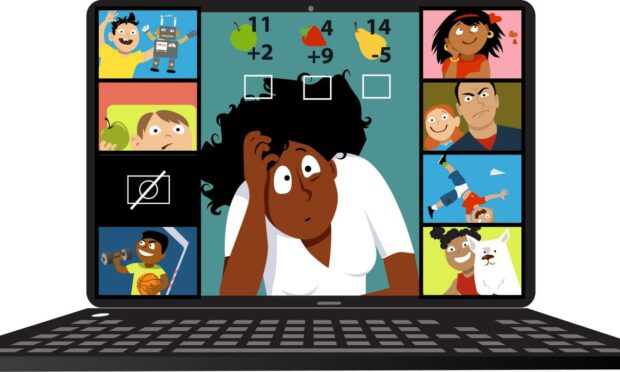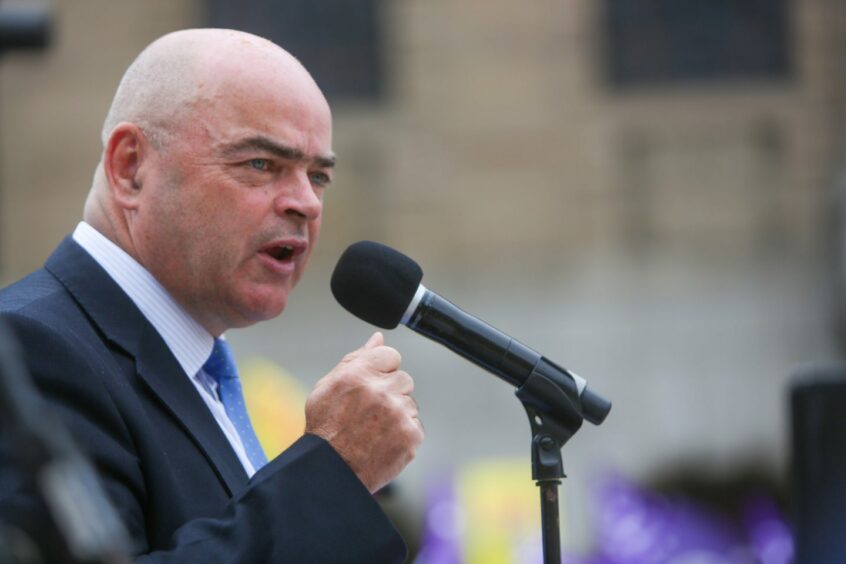A survey of the teacher workload in Scotland found a ‘significant’ increase in their workload during the pandemic – and some are considering leaving the profession.
The Educational Institute of Scotland (EIS) have published the findings of its 2021 member workload survey.
More than 16,000 teachers responded, roughly one-third of the EIS total members.
Of these, 93% reported that they work above their contracted hours each week. Almost half of the full-time teachers reported a full day of extra work each week.
In their comments submitted with survey responses, many teachers said they feel stressed by the higher demands and left with no choice but to meet the extra requirements.
‘Significant’ increase in the workload in 2021
According to the survey results, teachers at the nursery, primary and secondary level all reported increases in their workload this year.
Here is a round-up of the significant stats.
- 88% of teachers indicated that their workload burden has increased during the pandemic.
- 61% of teachers report that workload levels have increased “significantly” during this period.
- 80% of Secondary teachers reported significantly increased workload related to SQA qualifications.
- 93% work above their contracted hours each week.
- 45% of full-time teachers work more than 8 extra hours every week – equivalent to over one extra full day of work each week, over and above contractual commitments.
When asked what contributed to the extra work, 58% of teachers pointed to staff shortages. Another 61% said they were doing extra to provide mental and emotional support for students.
Work-life imbalance
One teacher described how covering for colleagues has led to more work at home.
“I have had to cover classes on an almost daily basis recently and cannot meet my own learning support remit, which is impacting upon pupil support required.”
Another said they don’t feel like they can turn down extra responsibilities and still be a good colleague.
“I’m currently doing lunch duty, learning Zone, wellbeing mentor UCAS reference writing – yes, I can say no, but really feel the school is under pressure just now.”
Another added that increased contact with parents also leads to more work in off-hours.
“There is less distinction between work and life balance. We could be contacted by parents outwith working hours. Lessons took much longer to prepare online than in the classroom.”
EIS General Secretary Larry Flanagan said: “Teachers have continued to face a rising tide of workload throughout the pandemic, for a wide range of reasons. Clearly, changes brought about in response to the pandemic have had an impact on teacher workload with additional tasks requiring to be undertaken on a daily basis to help keep classrooms safe.”
Secondary teachers feel the effects of SQA changes
The survey also asked secondary teachers how the Alternative Certification Model, which replaced last year’s standard exams, impacted their workload.
Approximately 80% of 4,855 respondents said the workload was significantly greater than during a normal year. They said writing their own assessments and taking part in school and local authority quality assurance were the major demands on their time.
Mr Flanagan suggested that much of this stress was a result of an unexpected change to the exam format.
“The challenges brought about by short-notice changes to the qualifications system have been a major driver in additional workload over the past two years for Secondary teachers. Meaningful reform of the examinations system is now required to ease the workload burden of teachers and students alike.”
Scotland teacher workload survey: teachers becoming ‘disenfranchised’
Roughly one-third of respondents (30%) said they are satisfied with their jobs and close to another third (32%) reported they are dissatisfied.
But when it came to questions specifically about their workload, more teachers reported concerns.
More than three-quarters of the 14,123 full-time teachers who responded said they were either dissatisfied (44%) or very dissatisfied (33%) with their workload this year.
In the comments, many teachers said they are reconsidering their positions.
“I am becoming very disenfranchised with a career I worked so hard to build,” one said.
“I feel guilty and upset about this.”
Another added that the increased strain is forcing them to make a difficult decision.
“For the first time ever, I am seriously contemplating leaving teaching. The strain on physical and mental health is just overwhelming at the moment. I don’t feel like a teacher.”
More from the Schools and Family team
Scotland vs. America: Who gets the work/life balance right?
Best of 2021 – The moments that made me proud to be a teacher

